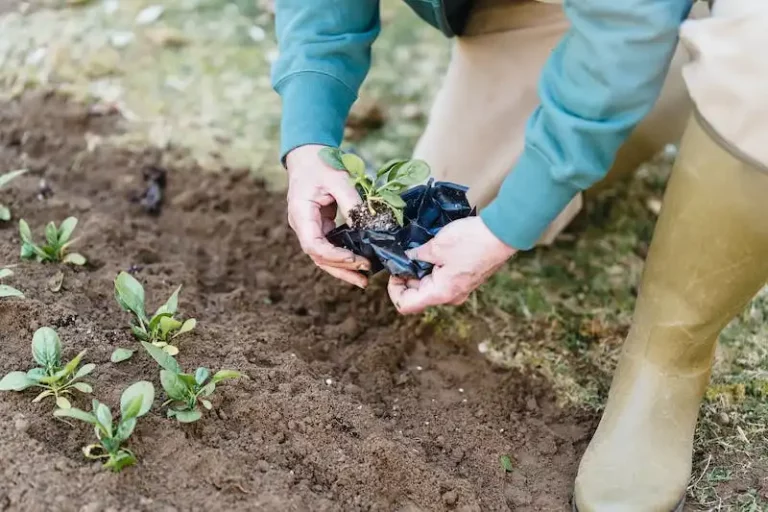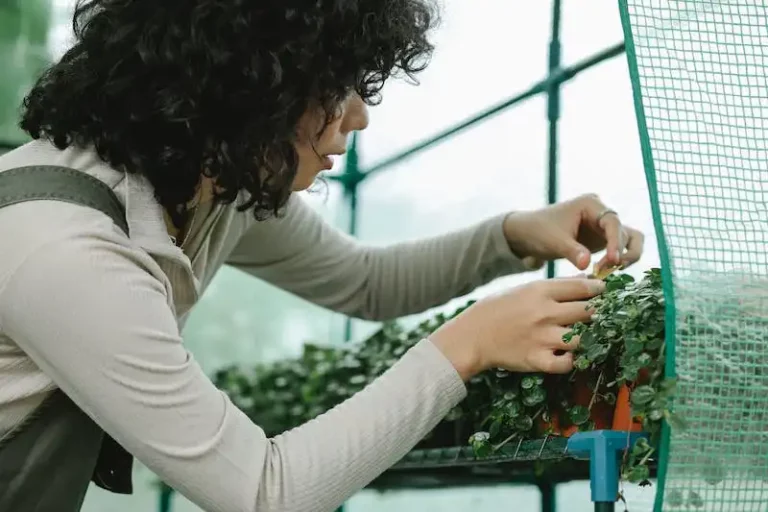Chives, known as Allium schoenoprasum in Latin, are one of the most popular herbs used in cooking. Whether you are an experienced gardener or just starting out, pruning chives is an important task to maintain their health and productivity. Pruning is the process of removing dead or yellowing leaves and flowers from the plant to promote optimal growth and development.
Why prune chives? Pruning chives is necessary because, while they are relatively low-maintenance, they can become overly dense and thin if left unpruned. Pruning also helps improve air circulation around the plants, reducing the risk of disease. Furthermore, yellow, wilted leaves can be a sign of waterlogging or other issues, so pruning them off allows the plant to focus its energy on healthy growth.
When to prune chives? Ideally, you should start pruning chives in the early spring before they begin to sprout. Some gardeners may choose to wait until the plants are at least two years old before conducting the first pruning session. However, if you notice any yellowed or diseased foliage, it is better to prune them back as soon as possible to prevent any further spread.
How to prune chives? To prune chives, you will need a pair of high-quality pruning shears. Start by removing any yellowed or wilted leaves, cutting them back to the base of the plant. Be sure to clean your shears between plants to prevent the spread of any disease. If your chives have become overly dense, you can also thin them out by snipping off some of the outer clumps.
After pruning chives: After pruning, it’s essential to provide your chives with optimal growing conditions. Chives thrive in well-draining soil and full sunlight, so make sure they are placed in a location that receives at least six hours of direct sun each day. Water them regularly, allowing the soil to dry slightly between watering to prevent overwatering or waterlogging. Applying a balanced fertilizer in the spring and mulching around the plants can also help maintain their health and productivity.
In conclusion, learning how to prune chives is an important skill for any herb gardener. By regularly pruning your chives, you can maintain their optimal growth and ensure a bountiful harvest of flavorful herbs for use in salads, soups, and other dishes.
Photo by Shutterstock.com
Source: example.com
403 ERROR
Have you ever encountered a 403 error on your website? This error code indicates that you do not have permission to access the requested resource. It can be frustrating particularly if you need to access certain files or directories on your server.
There can be several reasons for a 403 error. One possibility is that you have not properly set the permissions for the file or directory you are trying to access. Another possibility is that the server administrator has blocked your IP address or user agent from accessing that particular resource.
To resolve a 403 error, you can try the following steps:
-
Check your URL: Ensure that you have entered the correct URL and that it is spelled correctly.
-
Clear your browser cache: Your browser may have cached an older version of the page, causing the 403 error. Clearing your cache can help resolve this issue.
-
Contact the website administrator: If you believe that the 403 error is a mistake, you can try contacting the website administrator and explaining the situation. They may be able to grant you access to the resource.
It’s important to note that if you encounter a 403 error on someone else’s website, you should respect their decision to restrict access. It’s always best to adhere to website policies and guidelines.
In conclusion, a 403 error can be frustrating but it usually indicates that you do not have permission to access a particular resource. By following the steps mentioned above, you may be able to resolve the issue and gain access to the resource you need.
How to Prune Chives
Pruning chives is an important step in maintaining their growth and ensuring a healthier plant. Chives, known for their flavorful leaves, are commonly used in soups, salads, and other dishes. That’s why it’s crucial to prune them to encourage new growth and maintain their taste.
So, why prune chives? Pruning chives not only prevents them from becoming too tall or sparse, but it also helps maintain the health of the plant. Removing yellowed or damaged parts, cutting off the flowers, and separating the dense clumps will encourage new growth.
Here is a step-by-step guide on how to prune chives:
1. Decide when to prune: Usually, chives are pruned in the early spring or fall season. This is the best time to begin the pruning process as it allows the plant to recover and grow before the next growing season.
2. Gather your tools: For pruning chives, you will need a pair of clean, sharp hand pruners or scissors. Always make sure your tools are sterilized to prevent the spread of disease.
3. Cut the chives back: Using your hand pruners, cut the chives back to the base. Cut about an inch above the soil level, removing any dead or yellowed leaves.
4. Water the chives: After pruning, water the chives thoroughly. This will provide the necessary moisture for the plant to recover from the shock of pruning.
5. Fertilize if necessary: If the chives look unhealthy or have poor growth, consider fertilizing them. Use a balanced, organic fertilizer according to the package instructions.
6. Maintain regular pruning: Throughout the growing season, keep an eye on your chives and continue to prune them when necessary. Regular pruning will help prevent the plants from becoming too crowded or leggy.
7. Harvest the chives: Once the chives have regrown and reached a suitable height, you can begin harvesting them. Simply cut off the desired amount of chives near the base of the plant.
8. Enjoy your harvest: The freshly pruned and harvested chives will have a more intense flavor and texture, making them perfect for your culinary creations.
403 Forbidden Error – Specific Pruning Tips
While the general pruning guide provided above is useful, here are some specific tips and tricks that can help you better maintain your chives:
– Cut back the flowers: If your chives are flowering, it is advisable to cut off the flowers. This prevents the energy from being diverted to seed production and encourages more leaf growth.
– Remove any yellowed or damaged leaves: Yellowed or damaged leaves can cause the overall health of the plant to decline. Removing them helps maintain the plant’s aesthetics and encourages healthier growth.
– Repotting the chives: If your chives have been growing in the same pot for many years, it might be time to consider repotting them. This allows for better nutrient uptake and prevents overcrowding.
– Prune the chives near a window: Chives thrive in bright sunlight. Pruning them near a window ensures they receive the natural light they need for optimal growth.
Following these pruning techniques and tips will help you maintain healthy and productive chives, ensuring a fresh and flavorful addition to your dishes.
Trim your chives for new growth
Trimming your chives is an essential process for maintaining a healthy and productive plant. By regularly cutting back the leaves, you can encourage new growth and ensure that your chives stay flavorful throughout the growing season. If your chives have yellowed or are looking a bit overgrown, it’s time to give them some attention.
Here’s a step-by-step guide on how to trim your chives:
- Start by assessing your chive plant. Look for any yellowed or wilted leaves, as well as any dead or damaged stems. These should be trimmed away to make room for new growth.
- Prepare your tools. You’ll need a pair of sharp pruning shears or scissors, a clean plantura, and a bucket or container for collecting the clippings.
- If your chives are potted, carefully remove them from the pot and gently separate the clumps of chives. If you’re working with chives in the garden, make sure you’re in a well-lit and comfortable gardening space.
- Begin the trimming process. Using your shears or scissors, snip off the yellowed or wilted leaves at the base of the plant. It’s important to make clean cuts, as jagged edges can lead to disease or pest problems.
- Continue to trim back the chives, removing any dead or damaged stems and leaves. Leave about 2-3 inches of growth so that the plant can photosynthesize and produce food.
- Once you’ve finished trimming, you can pour the clippings into your compost bin or use them as fresh herbs in your cooking. Chives have a mild onion flavor and can be a great addition to salads, soups, and other dishes.
- After trimming, water your chives thoroughly, providing enough water for them to soak up. Chives prefer high-quality soil and require regular watering to thrive.
- If you’re growing chives in pots, consider mulching around the base of the plants to help retain moisture and improve soil fertility. Mulching also prevents weeds from growing and provides insulation for the roots.
- Repeat this process throughout the growing season as needed. Chives are perennial herbs, so they will come back year after year. Trimming them back encourages new growth and helps maintain a healthy plant.
By following these steps and giving your chives the attention they need, you’ll have a productive and flavorful herb throughout the year. Don’t be afraid to experiment with different trimming techniques and find what works best for your chive plants. Happy gardening!
Image source: shutterstock.com




